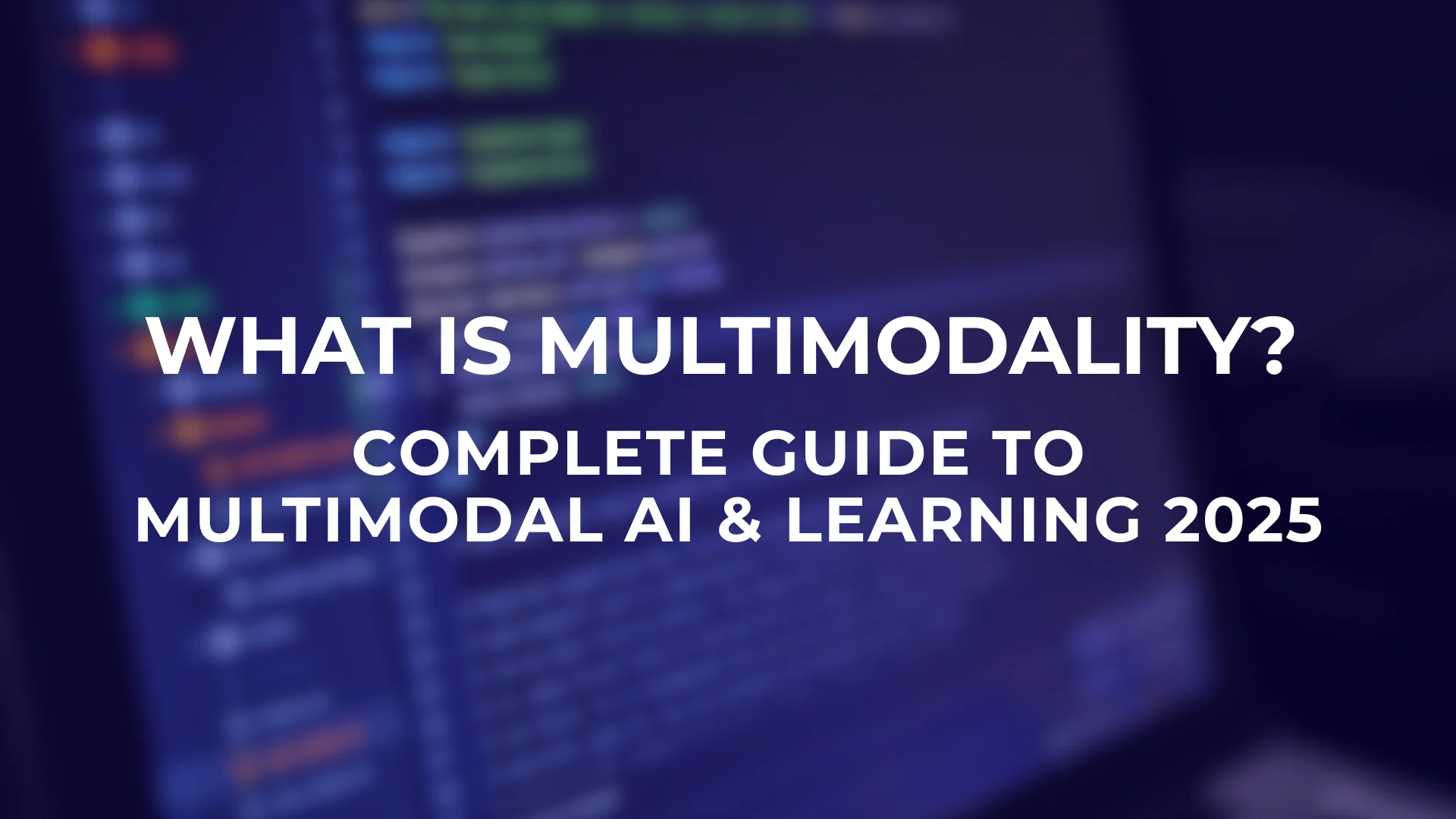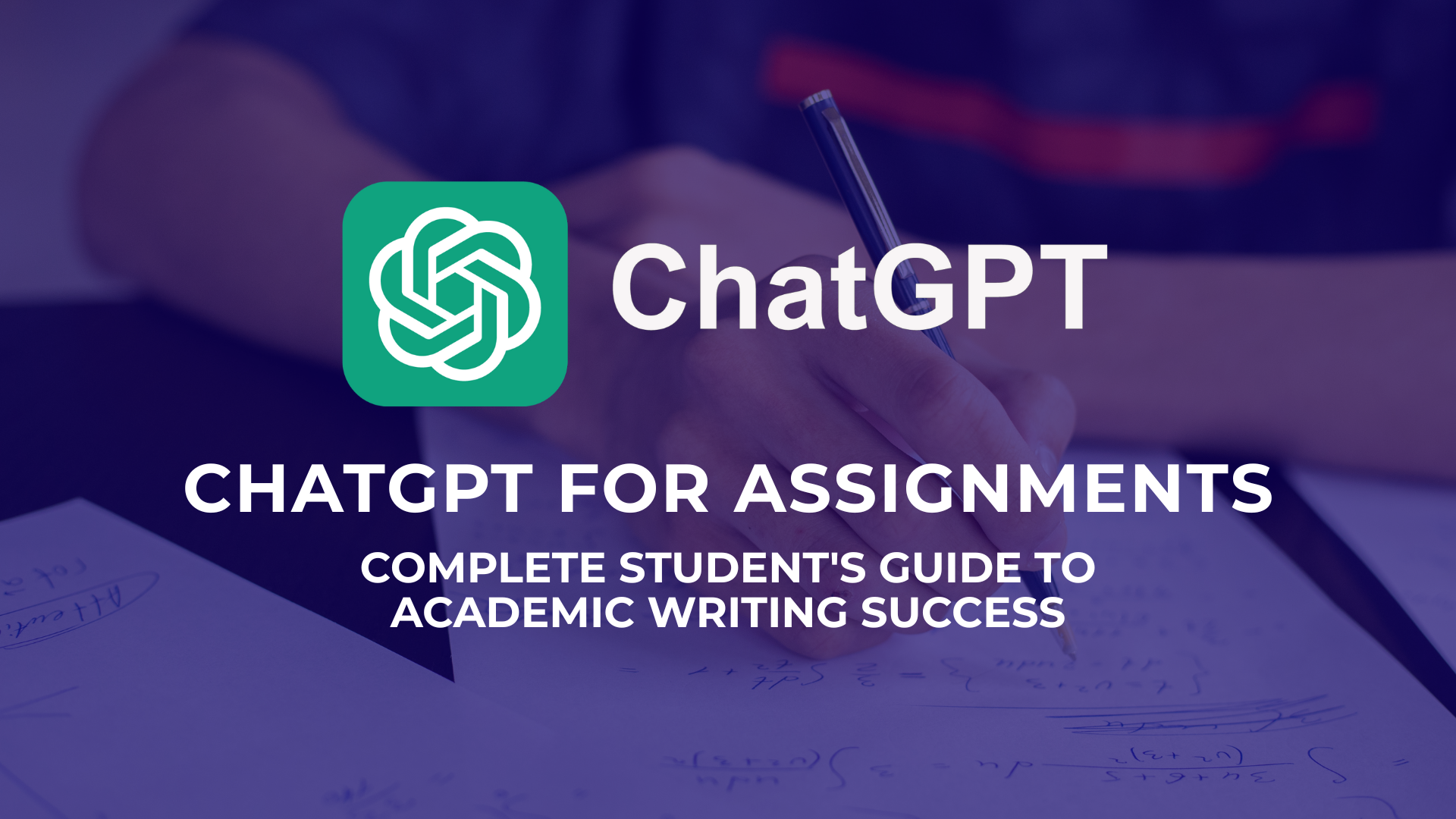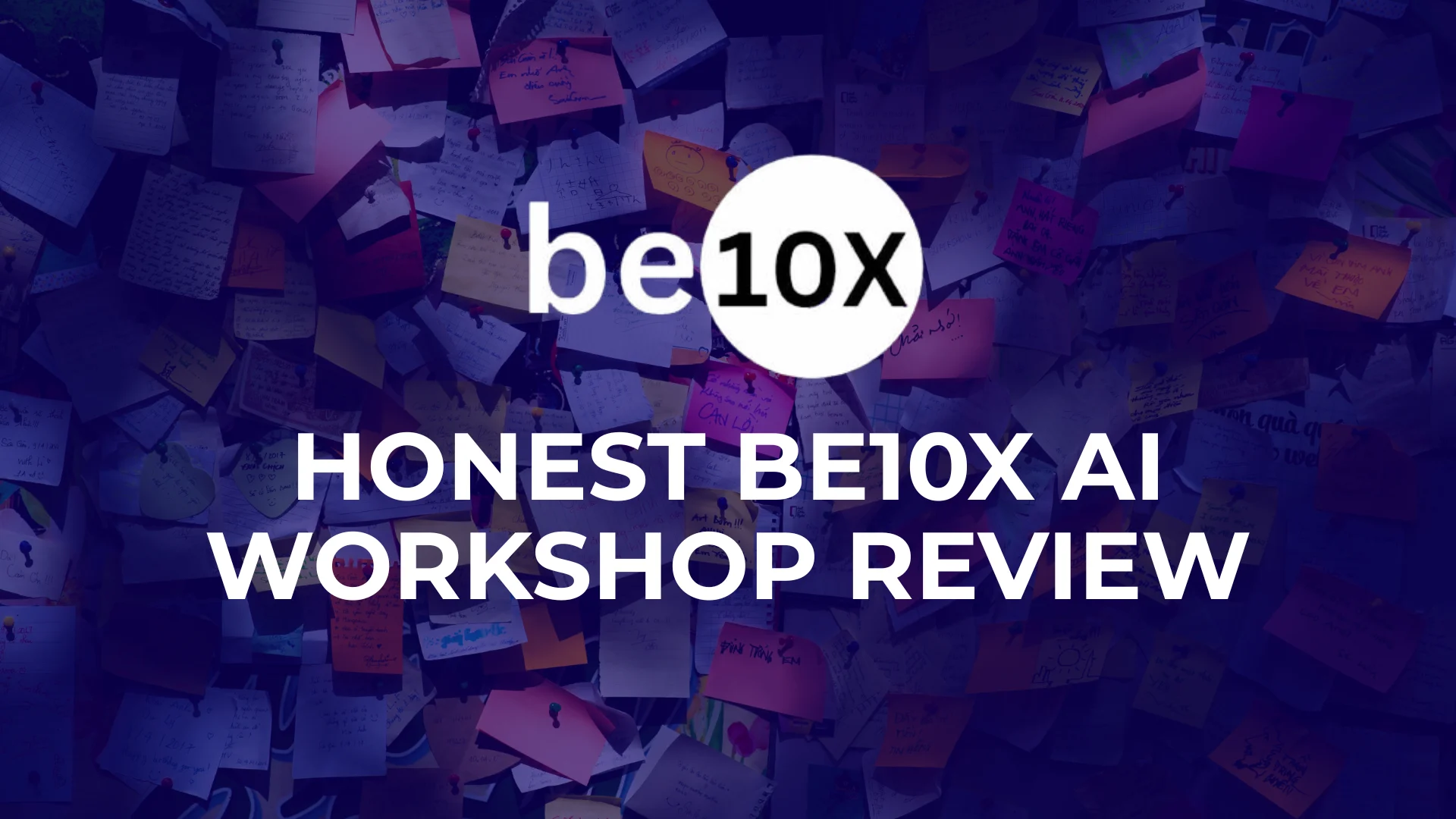Understanding Multimodality: The Basics
Think about how you experience the world right now. You’re reading these words (visual), maybe hearing music in the background (auditory), possibly feeling your phone vibrate (tactile), or even smelling coffee brewing nearby (olfactory).
Your brain doesn’t process these inputs separately, it combines them all to create one rich, complete understanding of your environment.
This is exactly, what is multimodality…
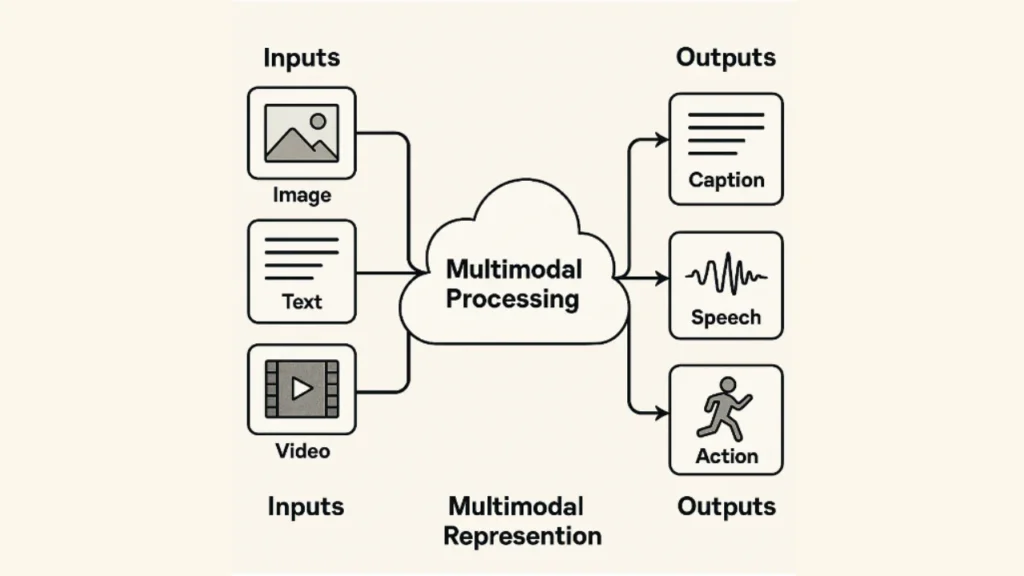
The ability to process and understand information from multiple sources or “modes” simultaneously.
In the digital world, multimodality refers to systems, whether AI or educational platforms that can handle different types of data at once.
Instead of being limited to just text or just images, these systems can work with:
- Text (words, documents, messages)
- Images (photos, diagrams, artwork)
- Audio (speech, music, sounds)
- Video (movies, tutorials, live streams)
- Sensor data (temperature, movement, location)
Here’s the thing, until recently, most AI systems were like specialists who could only speak one language.
A language model could handle text, a computer vision model could process images, and a speech recognition system could deal with audio. But they couldn’t talk to each other or combine their knowledge.
Multimodal systems changed everything. They’re like polyglots who can seamlessly switch between different forms of communication, understanding the connections and relationships between them.
- Understanding Multimodality: The Basics
- Multimodality in AI: How Machines Learn Like Humans
- Multimodality in Teaching: Revolutionary Learning Approaches
- How Multimodal AI Actually Works
- Real-World Applications That Will Blow Your Mind
- Healthcare: Saving Lives Through Multimodal Understanding
- Education: Personalized Learning for Everyone
- Autonomous Vehicles: Safe Navigation Through Multiple Senses
- Creative Industries: Democratizing Content Creation
- Accessibility: Breaking Down Barriers
- Customer Service: Understanding Context and Emotion
- Why This Matters for You
- Conclusion
Multimodality in AI: How Machines Learn Like Humans
Let’s break down what multimodality means in the AI context, because this is where things get really interesting.

The Evolution from Unimodal to Multimodal AI
Remember when ChatGPT first launched in November 2022? It was revolutionary, but it had one major limitation, it could only understand and generate text.
You couldn’t show it a picture and ask “What’s happening here?” or upload an audio file for analysis.
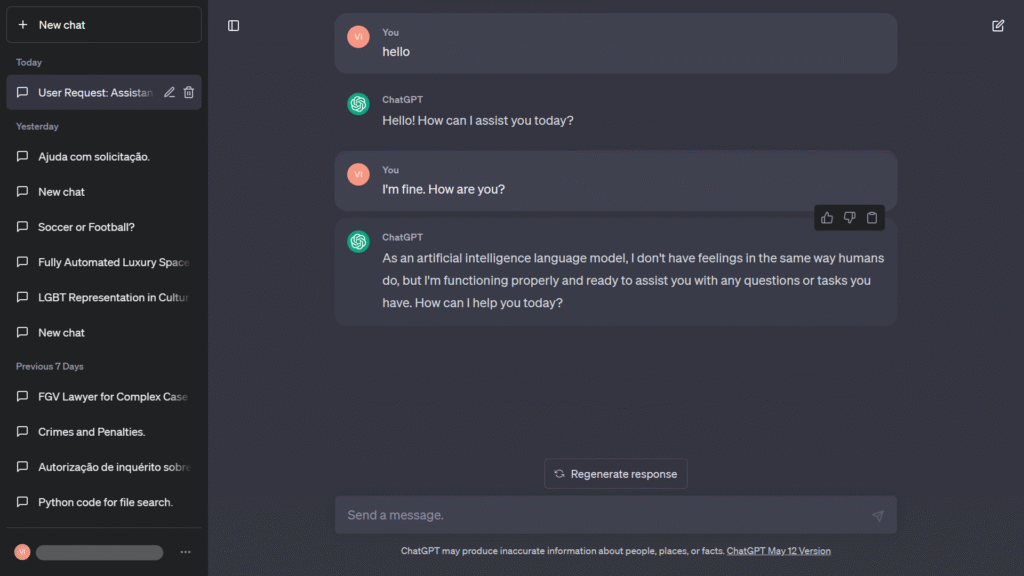
This was unimodal AI, powerful within its domain but limited in scope. Then came the multimodal revolution.
Modern multimodal AI systems like GPT-5V, Google’s Gemini, and Meta’s ImageBind can:
- Look at an image and describe what they see
- Listen to audio and transcribe or analyze it
- Watch videos and understand the story
- Read text and generate corresponding images
- Process all these inputs together for richer understanding
Why Task-Relative Definition Matters
Here’s something fascinating from the research…

The definition of what counts as “multimodal” actually depends on the task you’re trying to solve. This concept, called “task-relative multimodality,” suggests that whether something is truly multimodal depends on what you’re using it for.
For example, if you have both a regular photo and an infrared image of the same scene, are these different modalities?
For a human, yes.. we can only see the regular photo. But for a machine that can process both wavelengths, they might represent the same type of information, just captured at different frequencies.
This task-relative approach helps us understand why modern AI systems are so powerful. They don’t just combine different data types randomly, they learn which combinations are actually useful for specific tasks.
The Technical Magic Behind Multimodal AI
Without getting too deep into the weeds, here’s how these systems actually work:
Step 1: Data Input and Preprocessing Different types of data get cleaned up and prepared. Text gets tokenized (broken into pieces), images get resized, audio gets converted to spectrograms (visual representations of sound).
Step 2: Feature Encoding Each type of data gets converted into numbers that computers can work with. Think of this as translation, converting the “language” of images, text, or audio into a universal mathematical language.
Step 3: Fusion Mechanisms This is where the magic happens. The system finds ways to combine these different numerical representations, looking for patterns and relationships between them.
Step 4: Generative Modeling Finally, the system uses all this combined information to generate outputs, whether that’s answering a question, creating an image, or making a decision.
Multimodality in Teaching: Revolutionary Learning Approaches
Now let’s talk about how multimodality is transforming education because this is where it gets personal for many of us.
Understanding Different Learning Styles
We’ve all heard about visual learners, auditory learners, and kinesthetic learners. While the science on distinct “learning styles” is mixed, there’s no doubt that presenting information in multiple ways helps most people learn better.
Multimodal teaching recognizes this by:
- Engaging multiple senses simultaneously
- Providing information in various formats
- Allowing students to demonstrate knowledge in different ways
- Creating more inclusive learning environments
How Multimodal Teaching Actually Works
Image a history lesson about ancient Rome. In a traditional classroom, you might read from a textbook and listen to a lecture. In a multimodal classroom, you might:
- Read historical texts (textual)
- Examine ancient artifacts and artwork (visual)
- Listen to reconstructed Latin pronunciation (auditory)
- Use VR to “walk” through ancient Roman streets (immersive/kinesthetic)
- Create presentations combining all these elements (creative/productive)
This approach doesn’t just make learning more interesting, it makes it more effective. When information comes through multiple channels, it creates more neural pathways in your brain, making the knowledge easier to remember and understand.
The Role of Learning Management Systems
Modern learning management systems are becoming increasingly multimodal. Instead of just hosting text documents and quizzes, they now support:
- Interactive video content
- Audio recordings and podcasts
- Virtual and augmented reality experiences
- Collaborative tools that combine text, voice, and visual elements
- AI tutors that can communicate through multiple modalities
How Multimodal AI Actually Works
Let’s dive deeper into the technical side, but in terms anyone can understand.
The Neural Network Symphony
Imagine an orchestra where different sections play different parts of a symphony. In multimodal AI, you have different neural networks (like different instrument sections) that specialize in processing different types of data:
- Convolutional Neural Networks (CNNs) handle images, looking for patterns, edges, shapes, and objects
- Transformer models process text, understanding context, meaning, and relationships between words
- Recurrent Neural Networks (RNNs) work with sequential data like audio or time-series information
The conductor ▸ the fusion mechanism ▸ brings all these different “instruments” together to create something beautiful and coherent.
Attention Mechanisms: The Secret Sauce
Here’s where it gets really clever. Modern multimodal AI systems use something called attention mechanisms.
Think of attention as a spotlight that can focus on the most important parts of different inputs at any given moment.
For example, if you show a multimodal AI a picture of a cat sitting on a red chair and ask “What color is the furniture?”, the attention mechanism will:
- Focus heavily on the visual input
- Pay attention to the words “color” and “furniture” in your question
- Zoom in on the chair part of the image
- Combine all this to give you the answer: “red”
Cross-Modal Learning: Teaching AI to Make Connections
One of the most impressive things about modern multimodal AI is its ability to learn connections between different types of data. This is called cross-modal learning.
For instance, an AI system might learn that:
- The sound of rain often corresponds to images of wet streets
- Excited speech patterns often accompany celebratory images
- Certain colors in images correlate with specific emotional tones in text
These connections help the AI understand context in ways that feel almost human-like.
Real-World Applications That Will Blow Your Mind
Healthcare: Saving Lives Through Multimodal Understanding
Doctors are using multimodal AI to combine:
- Medical images (X-rays, MRIs, CT scans)
- Patient records (text-based medical histories)
- Lab results (numerical data)
- Genetic information (sequence data)
This combination helps them:
- Detect cancer earlier than ever before
- Personalize treatment plans
- Predict patient outcomes
- Reduce diagnostic errors
Real example, AI systems can now look at a mammogram, consider a patient’s family history, and factor in genetic markers to assess breast cancer risk more accurately than traditional methods.
Education: Personalized Learning for Everyone
Imagine an AI tutor that can:
- Listen to how you pronounce words and correct your accent
- Watch you solve math problems on paper and identify where you go wrong
- Read your essays and provide detailed feedback
- Adapt its teaching style based on whether you learn better through visual, auditory, or hands-on methods
This isn’t science fiction, it’s happening now in classrooms around the world.
Autonomous Vehicles: Safe Navigation Through Multiple Senses
Self-driving cars use multimodal AI to combine:
- Camera feeds (what the road looks like)
- LiDAR data (3D mapping of surroundings)
- Radar signals (detecting objects in weather conditions)
- GPS information (location and mapping data)
- Audio sensors (detecting sirens or honking)
By processing all this information simultaneously, these vehicles can make split-second decisions that keep passengers safe.
Creative Industries: Democratizing Content Creation
Artists and content creators are using multimodal AI to:
- Generate concept art from story descriptions
- Create music videos that match song lyrics
- Design marketing campaigns that work across visual and audio mediums
- Translate ideas between different creative formats
Accessibility: Breaking Down Barriers
Multimodal AI is making technology more accessible by:
- Converting text to speech for visually impaired users
- Generating captions for deaf and hard-of-hearing audiences
- Creating visual descriptions of images for screen readers
- Enabling gesture-based control for people with mobility limitations
Customer Service: Understanding Context and Emotion
Modern customer service systems can:
- Analyze the tone of voice in customer calls
- Process screenshots of technical problems
- Understand context from chat histories
- Provide solutions that consider both technical and emotional factors
Why This Matters for You
Whether you’re a student, professional, or just someone curious about technology, multimodal AI will likely impact your life in the coming years.
For Students: These tools can make learning more engaging, personalized, and accessible. They can help you understand complex concepts through multiple approaches and provide instant feedback on your work.
For Professionals: Multimodal AI can automate routine tasks, enhance creative processes, and provide insights that single-modality tools cannot. It’s becoming a competitive advantage in many fields.
For Creators: These technologies are democratizing content creation, allowing anyone to produce professional-quality material across different media types without extensive technical skills.
for Everyone: Multimodal AI is making technology more intuitive and human-like, reducing the barrier between what we want to communicate and what machines can understand.
Conclusion
Multimodality represents a fundamental shift in how we think about artificial intelligence and human-computer interaction.
By enabling systems to process and understand multiple types of information simultaneously, we’re creating tools that feel more natural, more powerful, and more aligned with how humans actually experience the world.
We’re still in the early days of this revolution. The multimodal AI systems available today are impressive, but they’re just the beginning.
As these technologies continue to develop, they’ll become more integrated into our daily lives, more capable of understanding context and nuance, and more helpful in solving complex problems.
The key is to approach these tools with both enthusiasm and thoughtfulness. They offer tremendous potential to enhance human capabilities, democratize access to information and creativity, and solve problems that previously seemed intractable.
But they also require us to think carefully about privacy, fairness, and the kind of future we want to create.
As we move forward, the most successful individuals and organizations will be those who learn to collaborate effectively with multimodal AI systems, not replacing human intelligence, but augmenting it in ways that make us all more capable, creative, and connected.
You May Also Like:
- What is MCP Server? Complete Guide to AI Integration in 2025
- Best YouTube Channels to Learn AI in 2025 | Free AI Courses
- ChatGPT for Assignments: Complete Guide with 15 Proven Prompts & Examples
